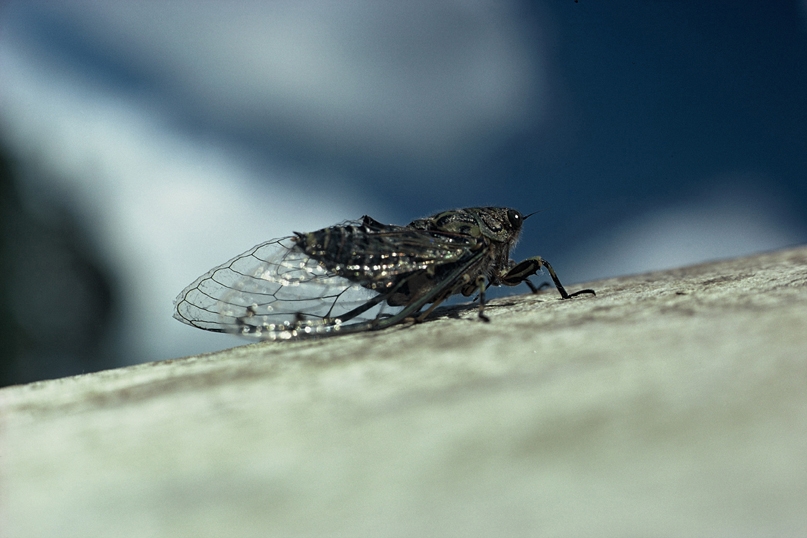Natural born drummers
Blogger: Bug-enthusiast and Tauranga branch member, Eila Lawton.
You know that summer’s here when the sound of a thousand miniature drums fills the airwaves – cicadas.
This courtship call is done by the male – who transforms from a pale dirt-dwelling larvae into a handsome, green-suited bug in his twilight weeks.
In his final interation, he is turned into a finely-tuned sonic machine with a large air-sac that he uses to woo potential partners.
This additional design feature means its reproductive and digestive organs are much smaller than that of its female counterpart.
Using this resonance chamber, the male will serenade its partners with a set of special muscles that vibrate these drums at up to 300 cycles per second.
And after a couple of weeks of wild courtship, mating, drumming and more drumming they’ll turn their toes up.
Prior to this, these raucous, energetic songsters lead a very different existence. Buried under a metre of earth, they’ll spend their time feeding on plant sap – using a pair of needle-like mouth-pieces – one that digests the sap, the other that hoovers it up.
We have over 50 species of cicada (kihikihi) that are unique to New Zealand, and they inhabit all different nooks and crannies of our varied landscape from sand dunes and cities to forests and mountains.
They’ll spend most of their lives underground (between three to five years) before they burst on the scene in a cacophonous mass.
Our largest cicada is the chorus cicada – or kihikihi wawa, ‘like the roaring of heavy rain (wawa)’. But even the small green cicadas can, en masse, produce 100 decibels of strident noise – that’s like standing about a metre from the some thumping speakers!
Listen for different rhythms – each species has a quite distinct song – some are chirpy & melodious, others are monotonous, shrill and almost screechy. Here’s some examples of their varied song.
Now, take a listen to our more ear-pleasing clapping cicada. – a species that beats its wings on ground to create a clicking sound.
Much of what we know about cicadas in NZ can be traced back to the naturalist Charles Fleming who enlisted his family to record their song in an attempt to identify them. Fifty year son and we’re still trying to work out the intricacies of their life-cycles
What we do know is that after mating, the female deposits eggs in plant stems and when the tiny nymphs emerge they fall to the ground, dig down and the cycle goes on.
Gardeners and orchardists may curse cicadas when they find the stems weakened by this egg-laying process, but cicadas provide food for birds and other invertebrates.
Their abundance is a good indicator of healthy soil. If they’re over-abundant however that may be an indication of an imbalance in our natural world and illustrates a loss of the creatures that should keep them in check.

